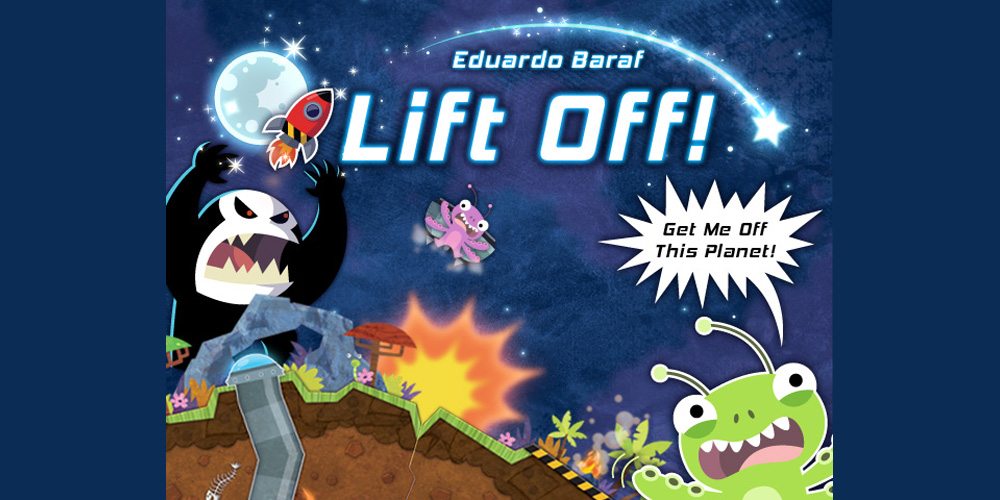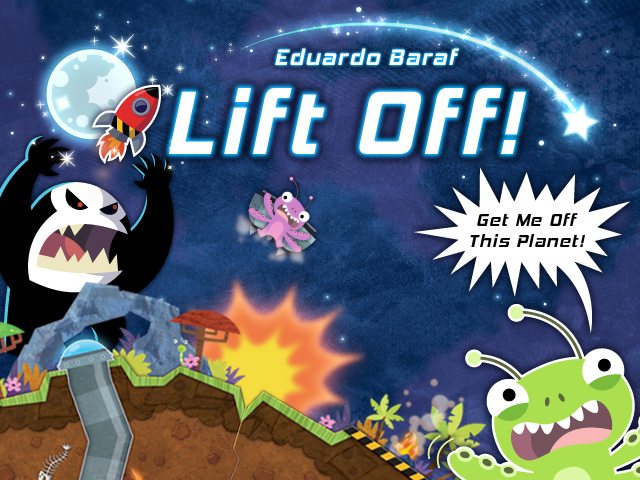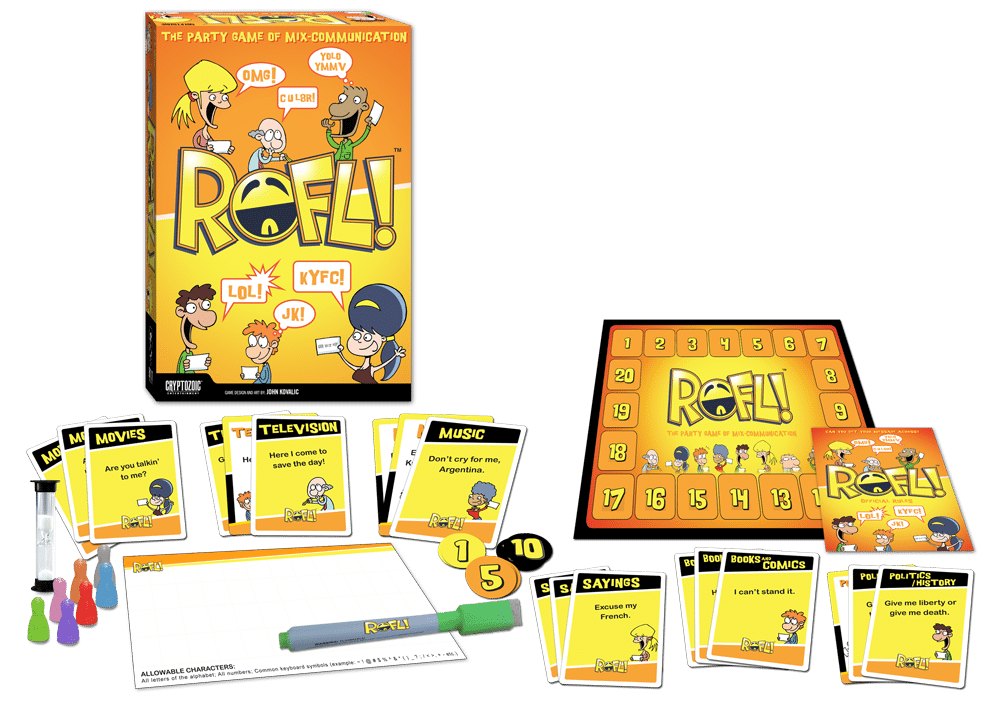Don’t you hate it when somebody trips over the coolant cord in the planet core and you only have a matter of days to get off the planet before it explodes? Yeah, don’t act like it hasn’t happened to you. Lift Off! Get Me Off This Planet! is a very cute game about impending planetary devastation.
New to Kickstarter? Check out our primer on Crowdfunding Basics.
At a glance: Lift Off! is for 2 to 5 players, ages 8 and up, and takes about 45 minutes to play. The game is currently on Kickstarter, with a pledge level of $45 for a copy of the game. My kids picked up on the rules fairly easily, though you may need to remind younger kids how the placement and lift-off costs work.
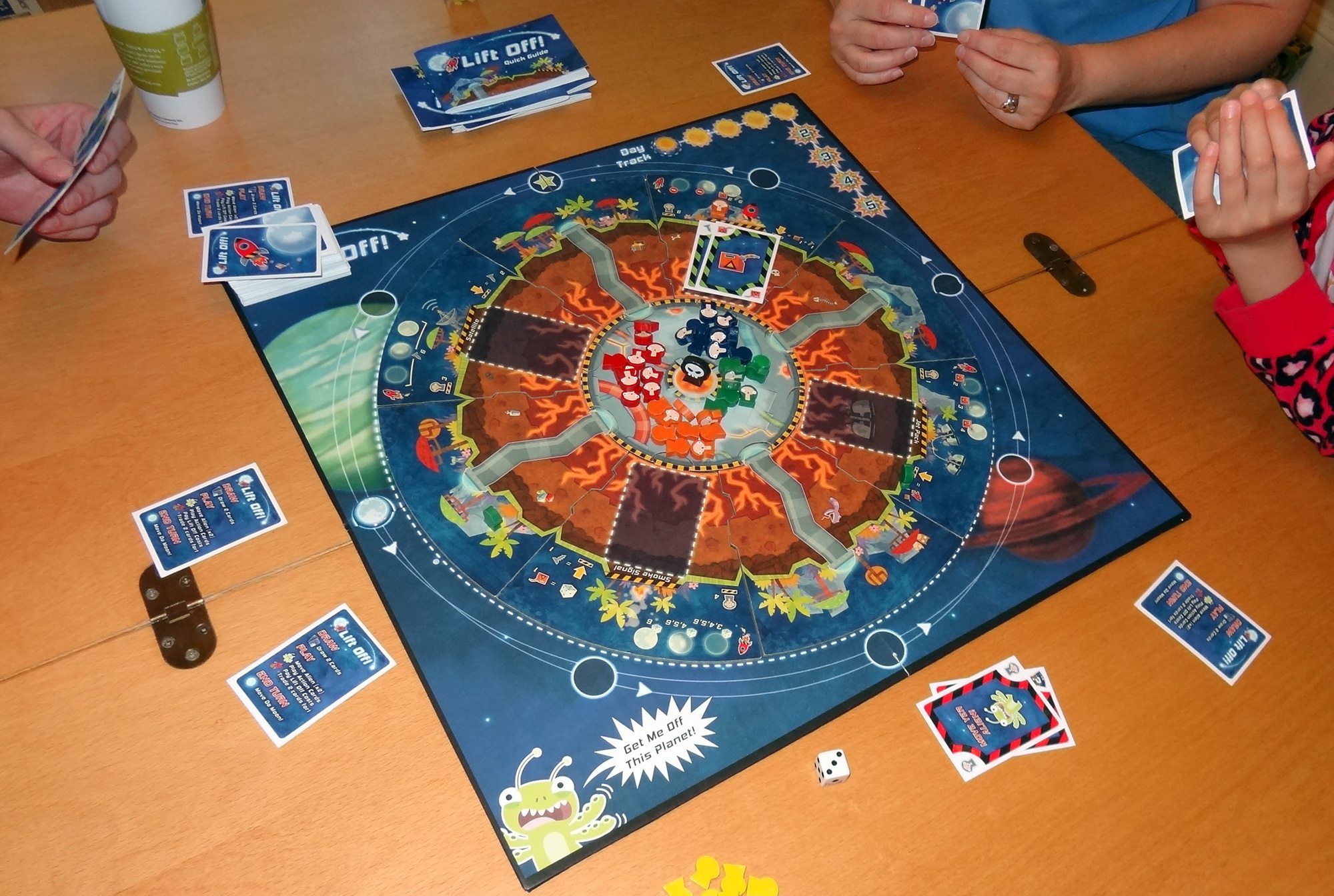
Components:
- 1 Game Board
- 1 Planet Core
- 4 Exit Point wedges
- 10 Lift Off Point wedges
- 1 Garglore figure
- 50 Alien figures (10 each in 5 colors)
- 1 Moon marker
- 1 Sun marker
- 1 six-sided die
- 100 Cards (64 resource cards, 34 action cards)
- 4 Reference cards
There’s a large quadfold board, on which you place the pieces of the planet, which fit together like a puzzle: the core, 4 exit points, and 4 lift off points. The board itself has the moon tracker and sun tracker, but you could potentially play the game without the board itself, if you were going to pack it for traveling.
The artwork, by Nichole Kelly, is really adorable, and sets the tone for the game. I could see this game being much more serious and cutthroat, but the cuteness helps keep that at bay. Well, a little. The alien figures are really cute, too. The plan right now is that they’ll be wooden figures with stickers, but a stretch goal would make them silkscreened wooden figures instead.
How to play
The goal of the game is to get all ten of your aliens off the planet before it explodes—or, failing that, get the most aliens off the planet.
The game board starts with the core in the center, the four exit point wedges placed as indicated on the board, and then four of the Lift Off points placed. There are suggestions for the first game, otherwise you can select them at random. The Moon starts on the spot indicated by the star icon, and the sun starts at the end of the Day Track. The Garglore figure starts in the lava pool in the core, and all the player aliens start in the core. Each player gets a hand of 2 cards.
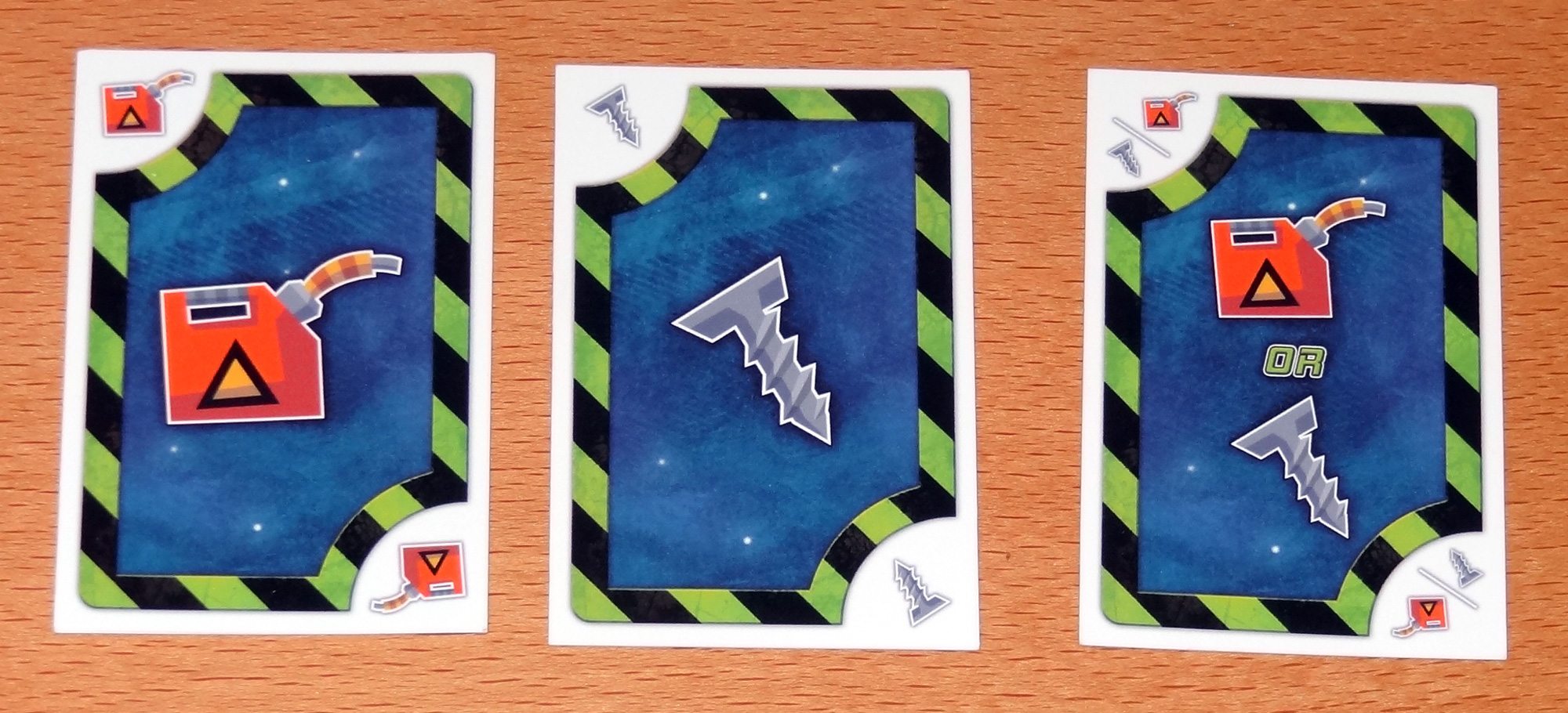
On each turn, you draw 2 cards, and then take any of these actions in any order:
- Move—Either move 1 alien 2 steps, or 2 aliens 1 step each.
- Play Action Cards—play any number of action cards.
- Pay Placement/Lift Off Costs—you must pay for placing an alien on a Lift Off point and to actually lift off.
- Trade 2 cards for 1—discard 2, draw 1.
Finally, you move the moon one step counterclockwise. The location of the moon affects Lift Off abilities. If the moon is directly above a location, then it is a Full Moon at that location. If the moon is on the direct opposite side of the planet, then it is a New Moon at that location. If the moon is anywhere in between, it is a Half Moon.
When the moon makes it all the way around and back to its starting location, the Day Tracker moves forward one step. If it reaches the spot matching the number of players, the planet explodes and the game is over.
You move from the core out to the planet’s surface using the exit point tunnels (which costs 1 movement), and from wedge to wedge on the planet’s surface for one movement point each.
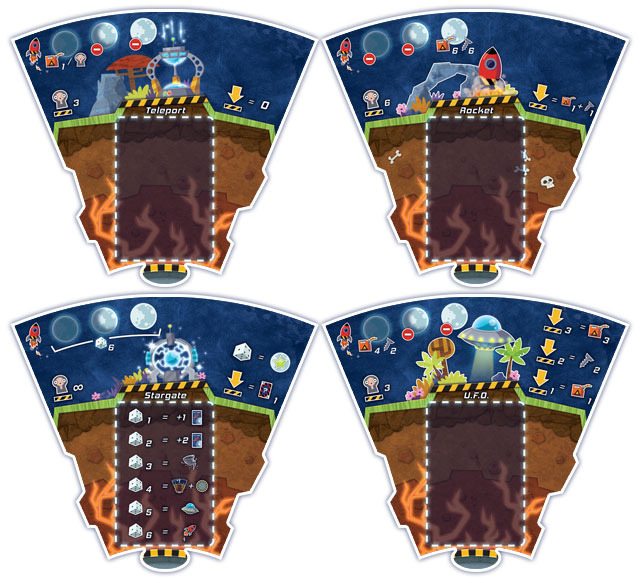
Lift Off points have various characteristics: there’s usually a maximum number of aliens that can be on the pad at one time. There’s a Placement cost, usually some number of cards that you must pay in order to get onto the pad. In the image above, the Teleport (top left) is free to place, but the Rocket (top right) costs one fuel and one screw.
The rocket icon in the top left of the wedge shows three moon phases, with icons below. These indicate the Lift Off costs which must be paid in order for the aliens on the pad to get off the planet, as well as which moon phases allow for lift off there. For instance, the Teleport only works during a new moon, and the Rocket only works during a full moon. If it’s the right phase of the moon and the Lift Off costs have been met, then all the aliens on the pad are immediately saved and set aside.
For example, the rocket costs 1 fuel and 1 screw to place your alien there. It holds up to 6 aliens. The Lift Off cost is 6 fuel and 6 screws, and it must be a full moon. When the moon reaches the Rocket and becomes a full moon, you check to see if there are 6 fuel and 6 screws there—if so, any aliens there are saved. So if there were 6 aliens there, then the costs would already be paid. If there were fewer than 6 aliens, the players there could pay extra in order to fill the Lift Off costs with fewer aliens on board.

Each Lift Off point has its own quirks. The smoke signals are easiest during a new moon, but you have to spend a fuel to roll a die and see if it works. The Trampoline is easiest during a full moon, but if you don’t roll well enough it sends you back to the core. The Jet Pack just requires fuel as a Placement cost and launches you immediately if you can afford to place an alien there.
Meanwhile, there are action cards: some let you move your alien or the moon. Some move the Garglore, which prevents aliens from lifting off at a certain location. Super Nova lets you treat everything as a full moon for your turn, and Asteroids let you treat everything as a new moon. Tornado sends all the aliens on exit points back to the core, and UFO attack makes everyone discard all of their cards. Finally, Terraform lets you remove an empty Lift Off point and replace it with another from the box.
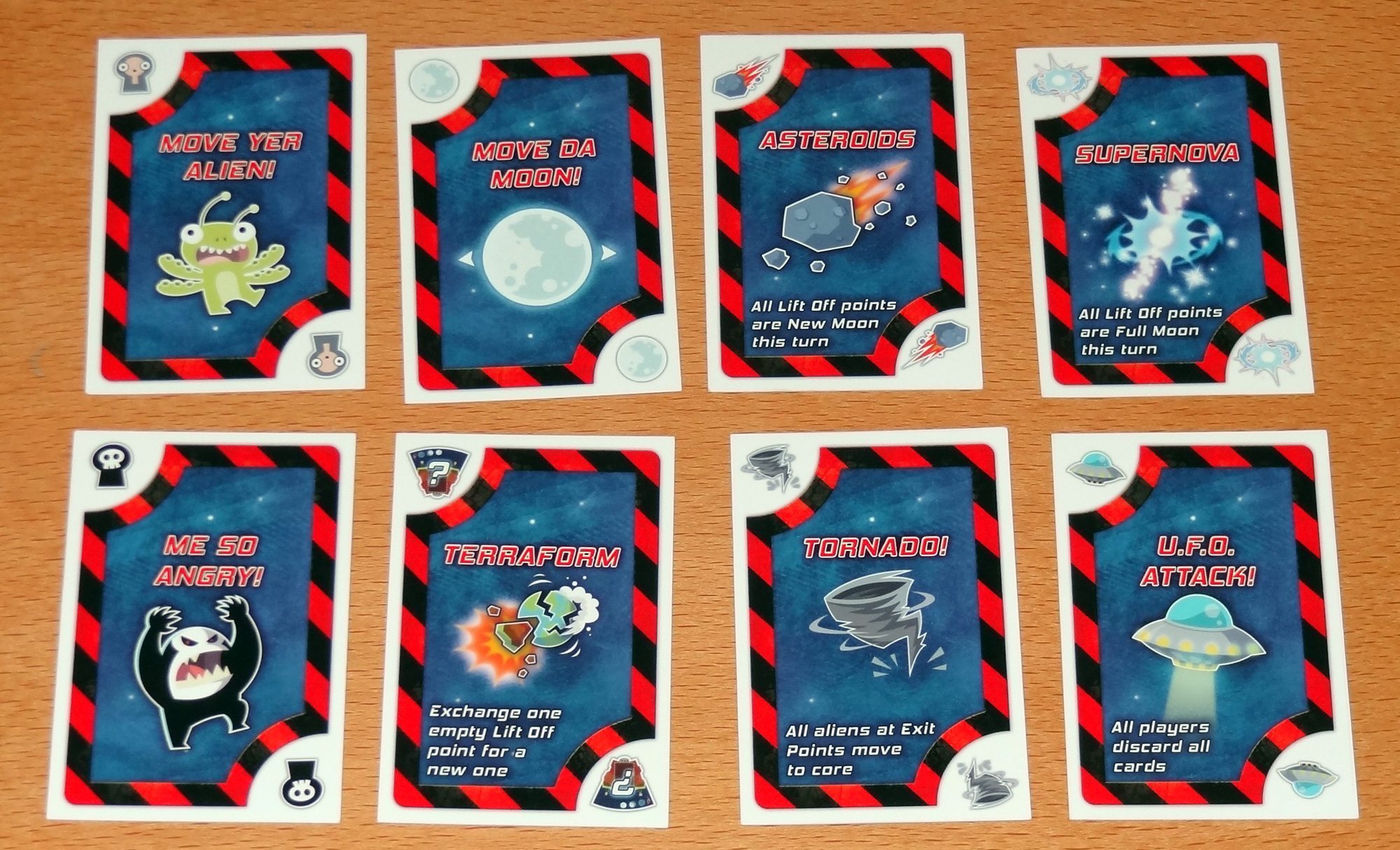
That’s basically it. Get all 10 of your aliens off the planet before it explodes to win. Or, if the planet blows up, whoever saved the most aliens wins. Ties go to the player with the most resources.
The Verdict
Lift Off! is a sharp-looking game, and has a lot of fun elements to it. Some of the mechanics seem pretty familiar, like moving around, playing action cards, and spending resources. But the phases of the moon is a new one—it can be a little tricky at first, but once you get the hang of it, it’s very cool.
Because of the way the lift off points are tied to the phases of the moon, sometimes moving the moon even one step forward or backward can make a big difference. With eight spaces around the board, it takes a while for the moon to go from new to full in any given location, so you’ll have to plan accordingly when you’re placing your aliens on lift off points. And careful use of the Garglore is important, too—like when everyone else is ready to take off in the Teleport and you got left out.
There is luck involved in the card draws, of course—if you get stuck drawing only screws when you need fuel, that can be very frustrating. And depending on the random setup of the four lift off points, you might end up with a game that needs mostly screws, or mostly fuel, rather than an even balance. You can trade in two cards for a new one, which can help, but is no guarantee.
There’s not too much direct backstabbing involved. UFOs force everyone to discard all of their cards, which can be very annoying if you’ve been hoarding cards, so that encourages players to use their cards and perhaps pay extra lift off costs when possible. Tornadoes send everyone on an exit point back to the core, though that’s more easily avoided by just getting your aliens to lift off points and waiting there rather than in between.
When I played with my daughter, I think the level of “take that” was about right, but my adult gamer friends wanted more ways to affect each other. Maybe something to boot people off a launch pad, or steal cards, or something. We were thinking it could be easily house-ruled to make the tornadoes affect everyone who hasn’t paid placement costs yet, which would make it more effective. Or, we thought it would be nice just to increase the number of Tornado and UFO cards in the deck.
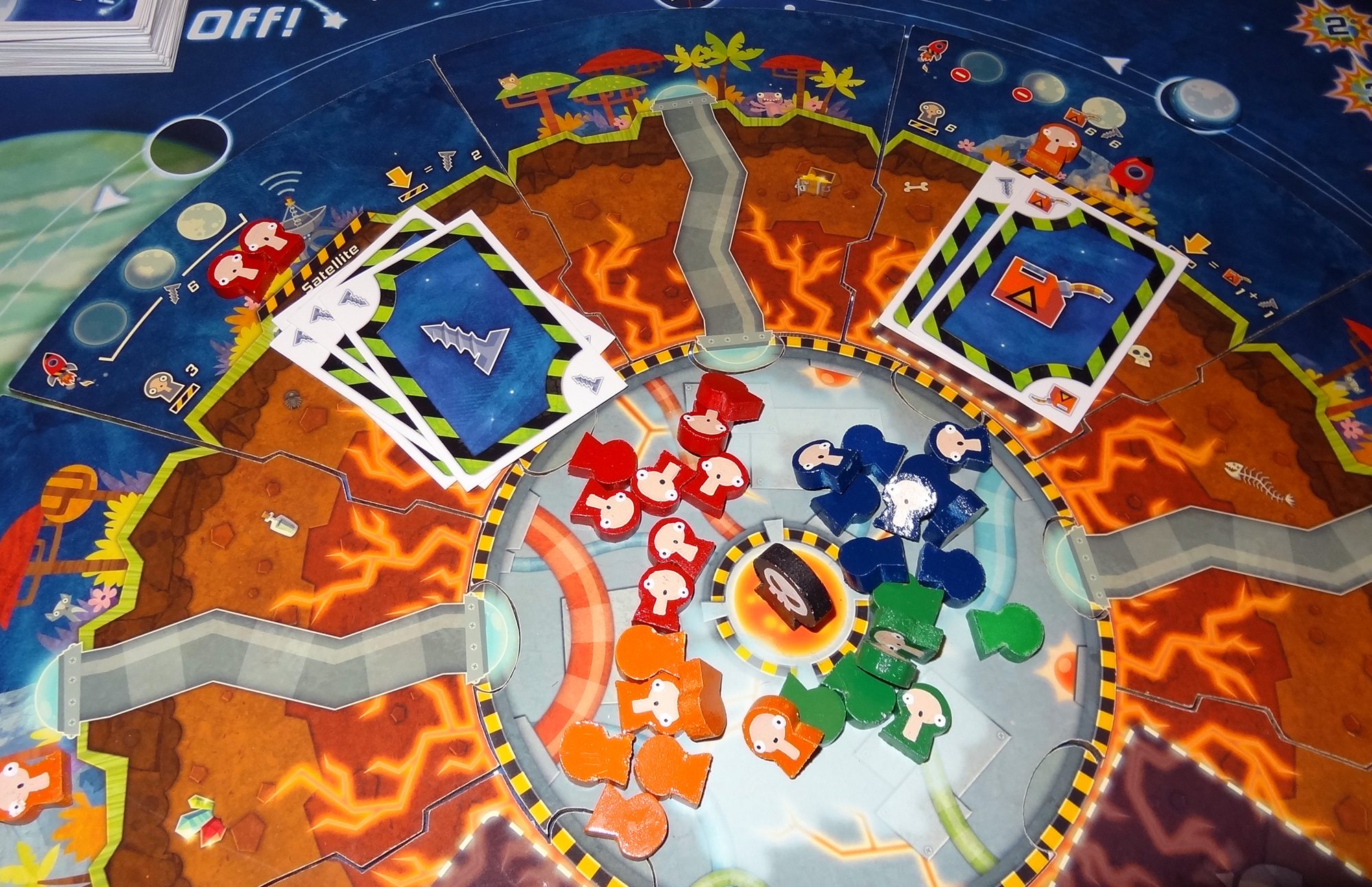
I like the way that many of the lift off points require some amount of cooperation. The Slingshot is a great example: it’s pretty cheap to place your alien there, but it only holds one alien at a time. Each new alien that’s placed there launches the previous alien into space. So you want to get there early, because anyone who gets there after you will essentially be paying your lift off cost. Get there too late, however, and your last alien will be stuck there with nobody to launch it.
The Miracle is another good example: it holds exactly one of each player’s aliens, and automatically lifts off when there is one of each color there. In one game I played, three of the four players went to the Miracle spot, and the fourth refused to go because he didn’t want to help us. It’s an aptly named site: it would take a miracle to get everyone to work together.
I also found that getting a lot of your own aliens to a spot may backfire. I loaded four of my aliens into the Rocket, but then I really needed other people to come and add some resources to help me get it launched. The others didn’t want to help me launch four aliens at a time, so they were very reluctant to join me. If I’d only loaded two aliens, I might have gotten more assistance.
While Lift Off! is not as deeply strategic as some games, there are still some really fascinating dynamics to it, and I think it will be a good one for both kids and adults. The artwork really drew in my kids, and the gameplay was meaty enough for me to enjoy.
For more about the game or to pledge for your copy, visit the Lift Off! Kickstarter page.
